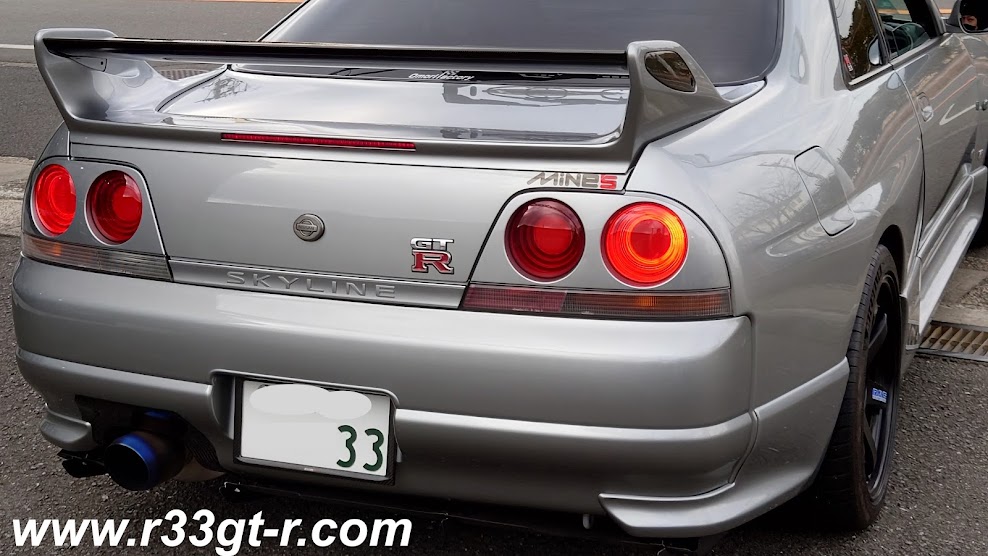(Updated Install Instructions, see below)
So after selling a few things on Yahoo Auctions, I realized I had saved up enough to spend some money on something which normally I would write off as complete bling. Nismo's carbon fiber airbox for the BCNR33/BNR34, originally introduced on the BNR34 Clubman Race Spec demo car back in June 2017.
What a great way to make money for Nismo, right? With an eye-watering retail price of 612,150 yen including tax!
But Omori Factory claims that their airbox actually has design improvements over the OEM airbox. For example, not only does their airbox have more volume, but it uses velocity stacks which in theory increase the air flow so much that the ECU has to be remapped! Further, their supplier is apparently a takumi who has supplied Nismo and Nissan with carbon fiber parts for their Group C and other racing cars over the past 20 years...in other words, these are not mass produced but carefully handcrafted items by someone who probably knows what he is doing...
Of course, if you simply want the carbon look, I have seen others who have created their own carbon fiber air boxes which appear to be copies of the OEM box, just in carbon fiber and priced much less.
But as it happened I was able to get my hands on one of the Nismo ones - I figured what would I have to lose by installing one in my car? Improve the looks, at the very least right? It would be a good match for the Nismo carbon fiber air inlet pipes and the Omori Factory air inlet snorkel I recently had installed.
Ok so first thing is to open up the box.
 |
| For those interested, here is the parts number for the 33/34 |
Fairly standard wrapping given the price...
Wow! Very nice. Almost blinded by this beautiful carbon fiber!
 |
 |
| Exactly how? Keep reading! |
Next step was to remove the OEM air box in order to do a proper side by side comparison. A few clips and bolts and don't forget the side vent, and it is a pretty easy job. The only trick is to loosen the bands connecting to the MAFs, and remove the airbox with the MAFs still attached.
Here is photo of both airboxes in the engine bay:
 |
| If OCD like me, you can see that the carbon is different for each piece... |
So here is the inward side of the airbox, after the MAFs have been removed.
 |
| Before installation of the velocity/venturi stacks |
 |
| After installation - shame the velocity stacks are hidden because they are gorgeous to look at! |
 |
| Close up - oops forgot to remove the tape there... |
 |
| In comparison, the OEM airbox simply has these rings with the nuts for attaching the MAF bolts |
 |
| So yes, a weight savings of 197 gms! |
 |
| Ok this is strange. CFRP is heavier by 67 gms! |
OK, so it seems like there is more volume, slightly less weight, and then possibly some increased air flow due to the velocity stacks.
Not surprisingly, installation is fairly simple, the only care point is to make sure that the MAFs are bolted on tightly to the carbon airbox and therefore also the velocity stacks inside (also watch out for the very thin O-rings on the MAFs side).
 |
| See, all 3 carbon pieces look different...why...?? |
So will this carbon airbox actually make a difference in the car's performance? In my next blog I will reveal my findings, as I took a quick road trip down to Yokosuka to visit some old friends. Stay tuned!
UPDATED INSTALL INSTRUCTIONS!
So Nismo Omori Factory contacted me this morning with apologies - after viewing this blog, they realized they had neglected to inform me about one VERY IMPORTANT STEP.
Which is, to RE-USE the rubber and steel spacers on the OEM airbox:
 |
| These things |
So of course, I complained to Nismo as well - for something costing this much, why not throw in some new rubber washers? I am ok with re-using the metal cores, but honestly how much does 3 rubber washers cost? Their response was that this is technically NOT a Nismo part, but an Omori Factory limited production run (they apparently don't make much of a profit on these). Hence no instructions, nor the extra bits one can expect to find in an official kit. Still, I wonder...
Anyway, for anyone out there who might get this kit, I hope these FULL instructions are useful!



























